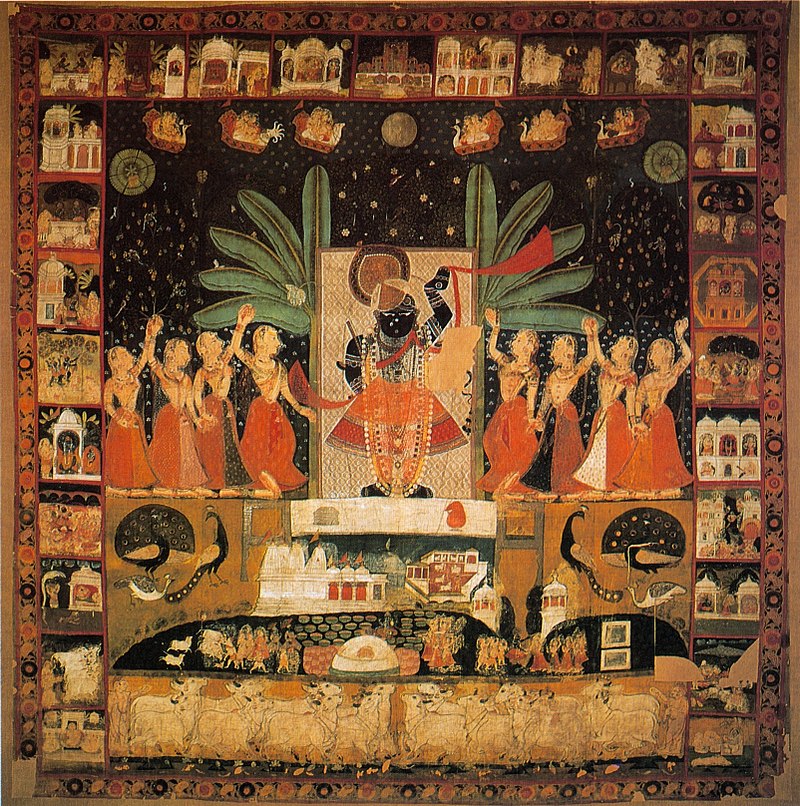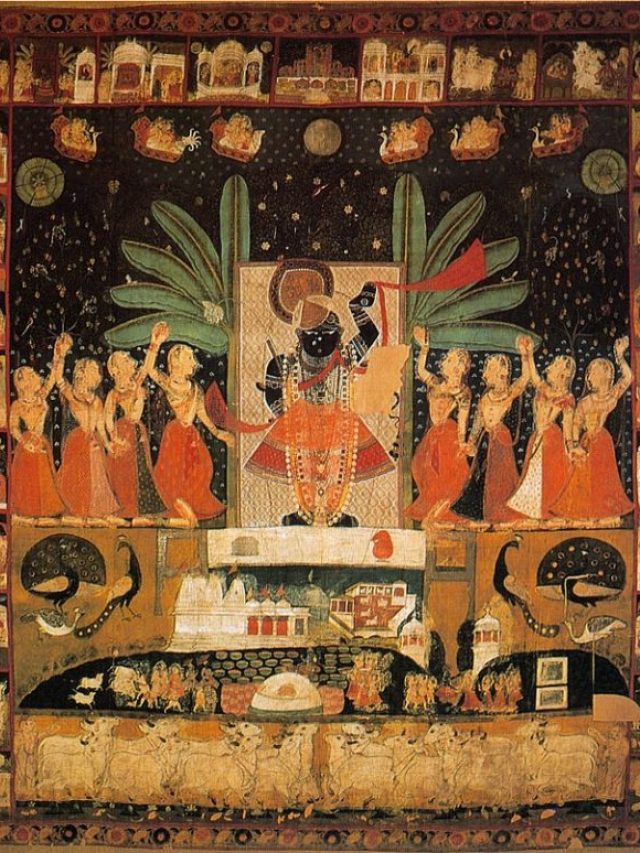Revered Art of Pichwai
Originating in Nathdwara, near Udaipur, Rajasthan, pichwai is a devotional custom where cloth is painted with revered images and hung behind the deity. This practice emerged in the 17th-century shrine of Nathdwara when an idol of Krishna was moved from Mathura during Aurangzeb’s reign. “Pichwai,” which translates to “that which hangs back,” symbolises devotion. In this article we shall be delving into the world of Pichwais that is revered by those who follow the Pushtimarg, a Vaishnavite sect that preach upon the child-like rendition of Krishna in the form of Shrinathji.
Early Days of Pichwais

In the beginning, the paintings intended for placement behind the idol featured a cutout, providing a space for the idol. This arrangement kept the center empty, reserved for the deity. The concept of chitraseva (where “chitra” means “picture” and “seva” means “service”) gradually led to incorporating the deity onto the canvas, a central aspect of Srinathji’s worship. Devotees served the image and collected keepsakes during temple visits. This resulted in market pichwais portraying the deity, becoming vibrant depictions that not only facilitated personal worship but also adorned festivals, especially Janmashtami, the celebration of Krishna’s birth.
The art flourished with the safeguarding of the Mewar Maharaja, Raj Singh, the shrine earned the name “Haveli of Shrinathji”. When the Nathdwara haveli was established, artists relocated from Kota and Kishangarh to be part of its creative workshop. This connection is why pichwais harmonise with the Rajasthani painting style, especially the Mewar school. The workshop followed a hierarchy, led by a master, supported by assistants and apprentices. Mainly from three sub-castes—Adi Gaur, Jangid, and Mewaras—the artists’ entry into this profession remains mysterious. From the 19th century onwards, numerous paintings featured artists’ names for attribution. The Deccani style on the other hand emerged with the presence of Pushtimarg followers in the region. They showcased Pichwais on cloth and textiles combining the arts of painting, printing, and kalamkari together to create magnificent pieces of art. These pichwais made great use of gold and silver foil upon red/black muslin or silk cloth/material. There are a few pichwais made with lace or machine-made which are present in a few archives of Indian museums from Europe which are important to mention.
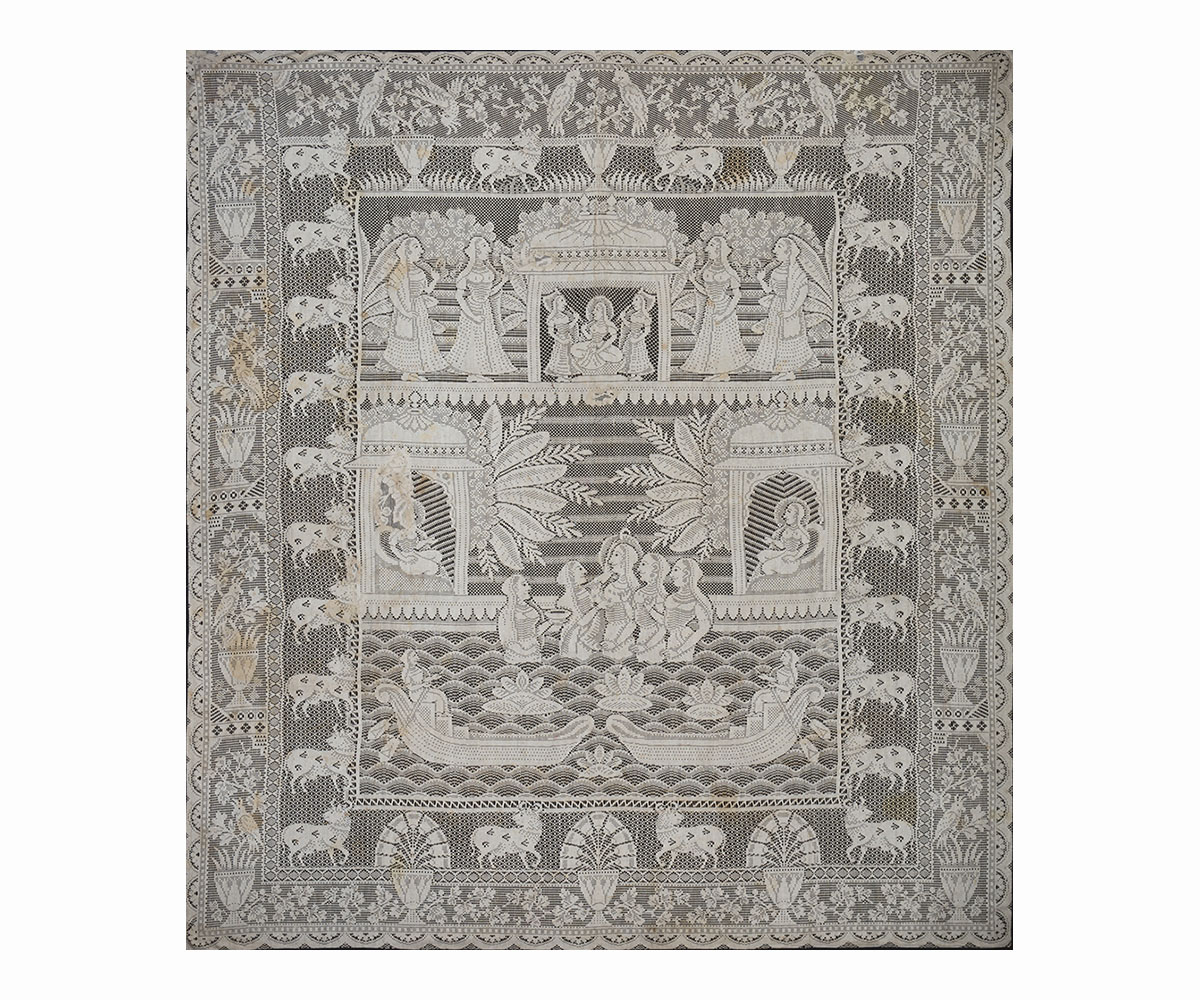
The Makings of a Pichwai
Painted pichwais used mineral pigments such as metallic shades from pure gold and silver, and organic shades derived naturally such as red lac from trees and deep yellow from a formula of cow urine called goguli. While hand-embroidered pichwais were rendered with silk threads and zari work. During the winter months, painted pichwais in the haveli would be replaced by those in heavy brocades to offer warmth to the deity, as well as for elevating the visuality of aarti during winter months where the sacred flame would make the silken and metallic threads glint.
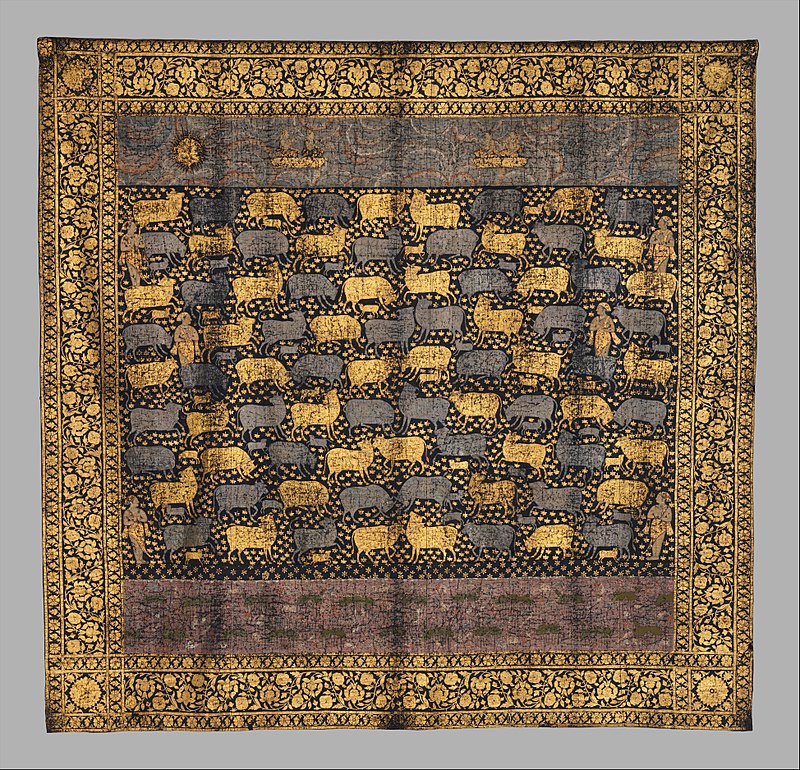
Motifs and Symbols of Pichwais
The main point of all Pichwais is always of Krishna/Srinathji and his various swaroops who always are showcased in a black colour with his hands raising the Mount Govardhan. The background has an amalgamation of gopis (milkmaids), forests or lush flora and fauna, peacocks, cows and lush background, gods flying about in their vimaan or vahana. The childhood of Krishna and some of his popular fables are played out in the pichwais.

Two important episodes that hold great significance within the Pushtimarg sect are that of Raslila and Annakuta. While Annakuta reflects the lifting of Mount Govardhan by Krishna. This episode is captured beautifully in pichwais within which a moment when Krishna advised Vraj villagers to worship the mountain providing for their lives instead of King Indira. Krishna, as the mountain king, received their offerings in the tradition of Annakuta, symbolizing sustenance. Facing Indira’s wrathful rain, Krishna subdues him by lifting the mountain with Shrinathji’s iconic raised left hand.and Raslila is the dancing of Krishna with Gopis reflective of the devotion and Bhakti concept of the Pushtimarg sect. Amid Vraj’s moonlit woods and Yamuna’s flow, Krishna’s flute beckons gopis, igniting dance. Ras Lila embodies bhakti’s surrender, soul-Lord union, beloved in pichwais.
There are more types/categories and kinds of Pichwais found within the pantheon reflecting the various stories, seasons and festivals associated with Krishna and his life story. Some examples of the same are: The Daan Lila Festival: Celebrated in August-September, the Daan Lila festival originates from Krishna’s demand for toll, milk, and butter from gopis for a safe journey. Set in Mount Govardhana’s Daan Ghati valley, pichwais portray gopis sharing milk with Krishna. Some merely hint at gopis carrying milk pots to Shrinathji. In Nathdwara, the Saan Lila festival extends for twenty days.
During summer, pichwais like Kamal Vana or Jal Vihar are favoured. These display lotuses and water scenes, offering Shrinathji relief from the hot weather.The Morakuti pichwais is the monsoon season Pichwai, it portrays joyful peacocks with regal crests dancing freely in the rain. Inspired by a Vraja village named Morakuti, abundant with peacocks near Radha’s birthplace, these artworks mirror the ras lila, Krishna’s enchanting dance with Radha and the gopis.
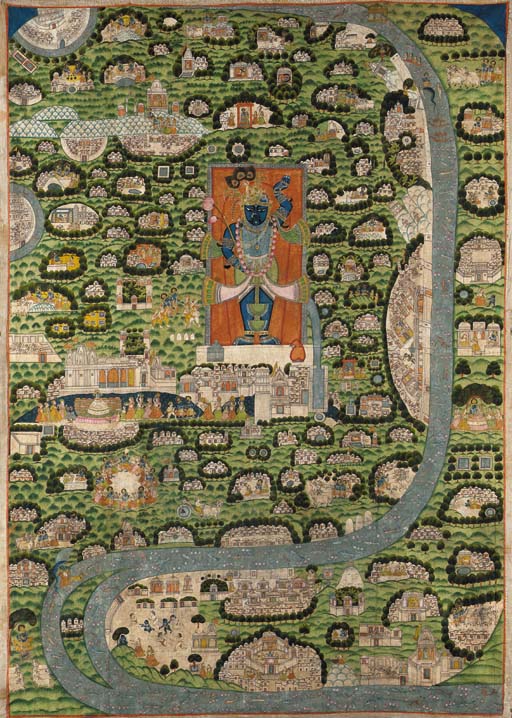
Pichwais crafted for shrines stand as some of the largest, reaching up to 3 meters in width and around 1 meter in height. The section behind the idol is often left empty or cut out, occasionally featuring a grand tree, like the ‘Kadamba’, evoking Krishna’s presence in Hinayana Buddhist iconography. These paintings show traces of Mughal miniature art, notably the striking ‘Tree of Life’ motifs. Maintaining key imagery is vital to aid quick identification during brief Darshan moments for devotees, enhancing its impact. Embroidery, applique work, and vibrant borders frame these artworks, while gold embellishments and white outlines accentuate the deities.
With its roots deeply embedded in devotion, Pichwais are intricate artworks that are windows into the spiritual world, offering a visual journey through myth and worship. From the majestic depictions of Krishna and his fables to the intricate portrayal of seasons and festivals, Pichwais celebrate the sacred with a harmonious blend of colour, form, and faith. Preserving ancient rituals and bridging timeless aesthetics, the Pichwai tradition of Rajasthan is a beautiful amalgamation of rich cultural significance to textiles which act as cloaks of reverence, inviting us to explore the vast pantheon of religious textile hangings within the country and their true essence via its intricacies and partake in the fervent devotion it embodies.
11 Famous Art Forms of India that You Should Definitely Check Out

Contributor


